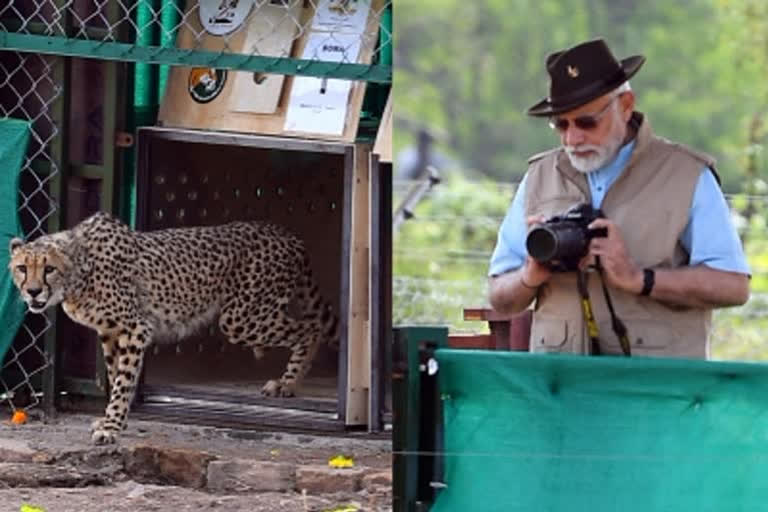New Delhi: India on Saturday brought eight Cheetahs -- five females and three males -- from Namibia which have been released into the Kuno National Park in Madhya Pradesh in a bid to reintroduce the big cats in the country post their extinction 70 years ago. The cheetahs will be monitored continuously by a team of experts for the next several days at the national park.
While the event is touted as a breakthrough in the conservation of the animal, many wildlife experts also raised questions about whether the trans-continental relocation will bear any fruit for the cheetahs. ETV Bharat's Rakesh Tripathi spoke to Bivash Ranjan, Additional Director General of Wildlife, Government of India in this regard.
ETB: Many questions are being raised that the cheetahs brought from Africa will not be able to adjust in India, what is the truth?
Ranjan: The first thing we do when such trans-continental relocation of any wild animal takes place is to see whether there is a favourable climate for them or not, whether there is enough food for the animal and the threat posed to the guest animal by the local animals. After studying these parameters we come to the decision whether it should be brought in or not. As far as the cheetah is concerned, let me make it clear that not only did we try to study the cheetah's habitat in India, but scientists from Namibia and South Africa also assisted in this task. Therefore, the effort made to reintroduce the cheetah (in India) will be absolutely successful, as all its technical aspects have been taken care of.
ETB: Has this kind of relocation happened anywhere else in wildlife before?
Ranjan: We translocate animals from one state to another. We brought a one-horned Rhinoceros from Assam to Lakhimpur. Translocation from one national park to another national park has been done in the same state, which too has been successful.
But the translocation of any mammal from one continent to another is a very important event in history to date. No such translocation has taken place before anywhere in the world. This is the first incident where an animal has been brought from the continent of Africa to the continent of Asia.
ETB: Questions are being raised that relocating the cheetah here is a waste of public money. At the same time, it is also said that the land of Kuno may not be suitable for cheetahs.
Ranjan:We first talked to the state governments about the usefulness of the cheetah, and where it can be kept. After getting proposals from every state, the Wildlife Institute of India studied them. This means both scientific facts and opinions were taken. Based on the facts, we shortlisted Madhya Pradesh. After this, the people of Cheetah Management came to our country from abroad and they studied it. For many weeks they sat here and studied the species and the ecosystem of the Kuno Wildlife Park and whether the climate will be favourable for the cheetah.
ETB: What is being done to keep an eye on these cheetahs?
Ranjan: We have just left the cheetahs in a small enclosure for quarantine for up to 30 days. Arrangements have been made for their 24-hour monitoring. We will see whether the animal adapts to our climate or not, and what kind of changes it undergoes. Groups of veterinarians and researchers have been formed, and each cheetah is being monitored by a group. After thirty days we will release them in a big enclosure of 2 sq km. Since all cheetahs are fitted with radio collars, we will keep an eye on what changes are seen in their behaviour, diet, hunting habits, and whether they are capable of hunting or not.
ETB: So you must have made arrangements for his hunting as well?
Ranjan: When we leave any animal in the forest, we also check the food suitable for its survival, that is, the animals that it can eat and the availability of the prey. We had studied all these things before bringing these cheetahs. We found that this area is very favourable for these cheetahs.
Also read: Cheetah: Faster than most cars but low on stamina, struggles to protect its kill
ETB: It is said that bringing cheetahs here will restore the degraded grassland of this area. What does it mean?
